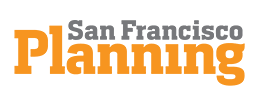The city’s artists, arts and cultural organizations are important partners to the city’s ongoing strategies for physical and mental health, education, workforce and community development in addition to enhancing the quality of life for all residents.
Background
What is Arts and Culture Protection?
The San Francisco Arts Commission (SFAC), Office of Economic and Workforce Development (OEWD), Grants for the Arts (GFTA), Recreation and Parks Department, Department of Children, Youth, and their Families (DCYF), Mayor’s Office of Housing and Community Development (MOHCD), and other City agencies support numerous arts and community-based organizations as partners supporting a vibrant and healthy community. In addition to grants for services, several of these agencies provide capital and capacity grants.
GFTA provides general operating support grants for 220 arts organizations. Fiscal year 2019-20 grants funded 16 new organizations, and funding for small- and medium-sized organizations increased by 28 percent over last year. $12.9 million in general operating support was awarded and an additional $1.3 million was awarded to support arts and culture re-granting programs, civic events, and capacity building.
San Francisco artists, arts organizations, and historically underserved communities through grants, technical assistance and capacity building, economic development, arts education initiatives and the community-based Cultural Centers are supported by the SFAC’s Community Investment Program. The Cultural Equity Endowment Legislation was established to advance San Francisco arts funding toward racial equity. Numerous grants programs are available to support San Francisco artists, arts organizations.1
Cultural Centers serve the community by housing nonprofit organizations and providing low-cost arts programs, performance and exhibition space. GFTA provides funding to SFAC to support the four City-owned centers. Centers include: African American Art & Culture Complex, also home to the Queer Cultural Center; Bayview Opera House Ruth Williams Memorial Theater; Mission Cultural Center for Latino Arts; and SOMArts Cultural Center, also home to the Asian Pacific Islander Cultural Center. The Arts Commission also supports the American Indian Cultural Center.
OEWD provides lease negotiation, space search services, and access to capital and financing for arts and cultural organizations. Many are assisted through OEWD’s Nonprofit Sustainability Initiative, a partnership with the SFAC and the MOHCD. San Francisco’s Nonprofit Sustainability Initiative maintains and expands services and resources for residents by deploying financial assistance, professional services, assessment tools and other resources to help stabilize nonprofits and overcome barriers to growth.
OEWD has worked with several intermediaries including Community Vision Capital and Consulting (formerly the Northern California Community Loan Fund), and La Piana Consulting to deploy programs and services that prioritize nonprofits that are deeply rooted in low-income and historically underserved communities, are facing significant financial constraints within the nonprofit sector, can demonstrate support for their efforts from multiple sectors, clearly identify how new clients and/or audiences will be acquired and existing beneficiaries served effectively by the proposed space, and can demonstrate evidence of planning to identify and mitigate financial risk.
These programs have been adapted regionally and in other parts of the country. OEWD participates in Northern California Grantmakers’ Nonprofit Displacement Working Group, which funded Spaces for Good, a free online tool that supports Bay Area nonprofits in offering and finding available office, co-working, event, and program space. Spaces for Good recently expanded to include commercial real estate and financial planning tools.
Why are Short-Term Rental Regulations Important?
The presence of arts and cultural organizations is crucial to community stabilization. The arts strengthen neighborhoods by building infrastructure, preserving cultural traditions and fostering positive change. San Francisco works to create strategies to protect, stabilize, and strengthen areas of the City that represent cultural heritages.
Key Trends
Nonprofit Sustainability Initiative investments have seeded the creation of 84,185 square feet of newly nonprofit-owned space
and stabilized 146,975 square feet of leased space for an average term of 7.1 years.
Over half of the organizations that have received financial assistance through the Nonprofit Sustainability Initiative
support access to arts and culture through their ongoing programs and resources.
Last year, 26 organizations requested three times the available funding for projects that total $38.1 million,
potentially securing 168,310 square feet of nonprofit space.
Since many arts and cultural organizations have fewer than 100 employees, the trends and challenges facing small business also apply to them.
What’s Happening Now to Protect Arts and Culture?
In November 2018, San Francisco voters passed Proposition E which allocates a portion of the hotel tax revenue to arts and cultural services. The proposition increases allocations of projected hotel tax revenue to GFTA, SFAC, and MOHCD for granting programs to the community.
In 2019-2020, $7.7 million is allocated to Nonprofit Sustainability Initiative programs including $2.7 million for Community Cornerstones, targeted support for nonprofits moving into newly constructed commercial space at affordable housing sites. Several of these spaces have been designated for arts and culture use through a community planning process. Because nonprofit housing developers control the sites they will be permanently stabilized, below-market cultural space.
In Winter 2020 OEWD, working with MOHCD, the Arts Commission, and Community Vision, will launch Community Cornerstones, a program that targets support for nonprofits moving into newly constructed commercial space at affordable housing sites. Several of these spaces have been designated for arts and culture use through a community planning process. Because nonprofit housing developers control the sites they will be permanently stabilized, below-market cultural space.
Supported by GFTA, Community Vision and CAST, two of the City’s partners in arts and culture space stabilization, recently launched online resources -- Spaces for Good and Culture Compass. Both help organizations locate and evaluate existing and potential spaces for nonprofit arts and culture.
Spaces for Good is a free online tool that supports Bay Area nonprofits in offering and finding available office, co-working, event, and program space and offers resources for capital project planning, lease negotiation and financial sustainability. Culture Compass is a citywide, interactive online mapping tool that plots existing and potential spaces for nonprofit arts and culture activities in San Francisco alongside demographics, zoning, transit, and real estate development data. Users can learn about San Francisco’s nonprofit arts and culture sector with key information that could help influence investment, policy, property acquisition and occupancy, and grant making decisions.
Issues with Protecting Arts and Culture
As real estate prices soar and access to affordable space becomes more limited, nonprofit arts and cultural organizations have limited options for space in San Francisco. If there is potential space available, it can be hard to find the space and have available funding for it.
Artists seeking support from the City must seek funds from SFAC. The application process for any city grant program can be a challenge to nonprofit or individual capacity. Though there are many grant opportunities for artists and organizations, they are tied to different ongoing strategies such as youth development, economic development, and health. The submission and reporting processes between different opportunities is uncoordinated.
For Future Consideration
The ideas for future consideration that have the potential to increase community stability in San Francisco are described below. They provide a starting point for agencies, decision-makers, and community members to explore stabilization efforts and identify critical pathways forward. Based on preliminary information, staff is qualifying these ideas according to the type of task, scale of resources and level of complexity to underscore that any of these ideas would require time and additional resources not currently identified. These are not City commitments or recommendations, rather informed ideas that will require careful vetting and analysis as to their reach, resource needs, feasibility, unintended consequences, legal implications, and racial and social equity considerations.
Space acquisition, development and enhancement
Space availability education and outreach
There is an opportunity to evaluate the current efforts to share existing and potential space information including: Culture Compass, Bay Area Performing Arts Spaces, Spaces for Good and the Property Information Map to understand how arts and cultural organizations utilize them and to identify strategies for marketing and user experience improvements.
| Type of Response | Prevention |
|---|---|
| Type of Task | Policy Implementation
|
| Resource | Generally only staff time and some program funding would be required
|
| Complexity | Complex – generally major legislation, and/or new program required, and more than three agencies involved
|
| Timing | Long Term (more than 5 years)
|
| Geographic Scale | Citywide |
| Partners | San Francisco Arts Commission (SFAC), GFTA, Office of Economic and Workforce Development (OEWD), community organizations |
| Benefit | Artists and cultural organizations would have an increased understanding of the city’s spaces. Existing efforts exist and provide a solid baseline to build on. |
| Challenge | It is difficult to develop a comprehensive and current database of spaces. This effort would require staff time and additional resources. |
Space acquisition, development and enhancement
Expansion of housing assistance for artists
Mission Economic Development Agency (MEDA) is providing a series of free workshops to help artists and cultural workers access the City’s affordable housing pipeline. There is an opportunity to expand this program as well as explore other ways the City can meet their housing needs.
| Type of Response | Prevention |
|---|---|
| Type of Task | Policy Implementation
|
| Resource | Extensive funding (the kind typically required for capital investments) and staff time would be required
|
| Complexity | Complex – generally major legislation, and/or new program required, and more than three agencies involved
|
| Timing | Long Term (more than 5 years)
|
| Geographic Scale | Citywide |
| Partners | San Francisco Arts Commission (SFAC), Mayor's Office of Housing and Community Development (MOHCD), Office of Economic and Workforce Development (OEWD), Planning, community partners |
| Benefit | Artists would have greater awareness of and access to the City’s affordable housing pipeline, potentially leading to more artists living in permanently affordable housing. |
| Challenge | Such an undertaking would require a significant amount of funding. |
Space acquisition, development and enhancement
Preservation and support for existing space
There is an opportunity to formalize support for arts and cultural organizations that own their buildings, have long-term leases, or have budgets over $2 million and do not currently qualify for capital improvement grants from city agencies. These organizations provide career pathways for artists and arts workers as well as rehearsal and gathering space. Technical and financial assistance might include: asset reserve analysis, engineering studies, space planning, strategic restructuring, facility budget projections, and financial assistance for tenant improvements.
| Type of Response | Prevention, Early Intervention, Mitigation |
|---|---|
| Type of Task | Data, Funding
|
| Resource | Extensive funding (the kind typically required for capital investments) and staff time would be required
|
| Complexity | Complex – generally major legislation, and/or new program required, and more than three agencies involved
|
| Timing | Long Term (more than 5 years)
|
| Geographic Scale | Citywide |
| Partners | San Francisco Arts Commission (SFAC), GFTA, Mayor's Office of Housing and Community Development (MOHCD), Office of Economic and Workforce Development (OEWD), Planning, community partners |
| Key Priority | Yes - Enhancements to Existing City Programs and Policies |
| Benefit | Artists and cultural organizations would have affordable spaces to remain in the City. An increased understanding of the city’s resources will help to preserve and protect them. |
| Challenge | Due to the current real estate market, there is a lack of affordable spaces for acquisition, much less development. Such an undertaking would require a significant amount of funding. |

